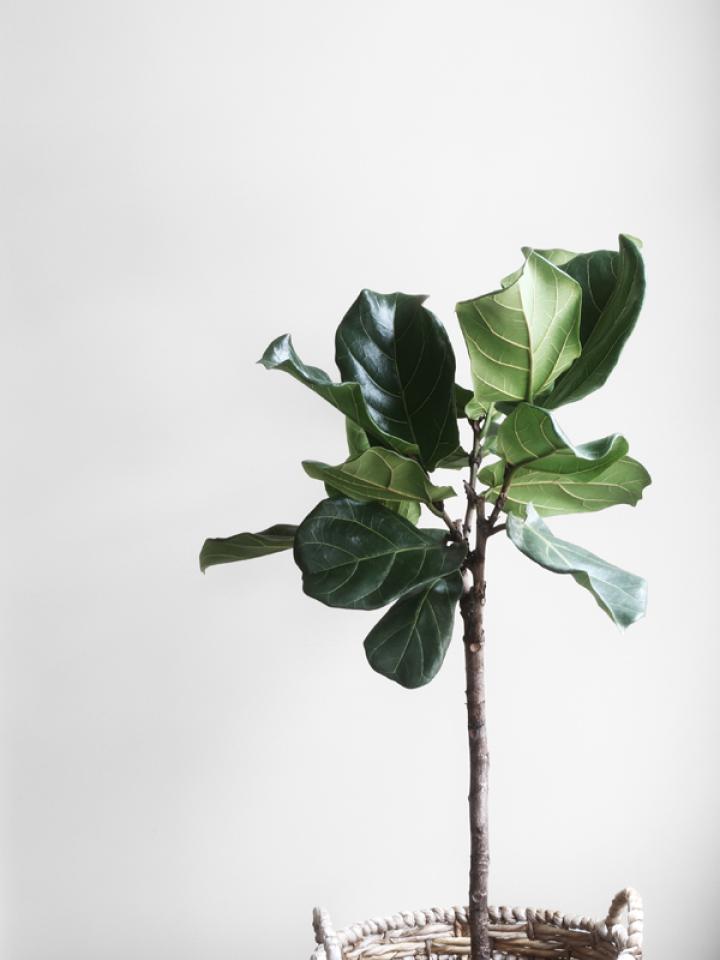Here are some pointers on how to keep your fig happy and thriving:
Let there be light
Fiddle head figs are most at home in a bright spot that gets plenty of daylight. But avoid anywhere that gets direct sunlight as this can damage the leaves.
Keep it clean
An accumulation of too much dust on those big, luscious leaves can cause “breathing” problems and act as a magnet for fungus, bacteria, pests and disease. Regular dusting with a soft, damp cloth will put pay to this.
Water with caution
Although there will be seasonal fluctuations in the amount of water your fiddle head fig needs, the general rule is to water when the top inch or so of soil is dry but it’s moist underneath. If in doubt, stick in a skewer – or even your finger. You’ll soon get to know your plant and when it’s ready for a drink.
Feeding time
Fertiliser once a month during the growing season (spring, summer and autumn) is all the feeding your fig will need.
Re-house or re-shape
After a year or so of thriving in your care, your fig’s roots will eventually outgrow its pot. You’ll know this when the roots start creeping out through the pot’s base. You have two options here: either transfer it to a bigger pot or trim the rootball. To do the latter, stand the plant upright, pull it out of the pot with its roots and use a sharp knife to slice off about an inch of the rootball, all around the sides. But be careful not to remove more than 20% of the roots.
Of course you can always follow us on our Facebook, Twitter, Pinterest and Instagram pages so you never miss out on our green inspirations, DIY projects and more care tips for other green friends that may be ideal for your home!





